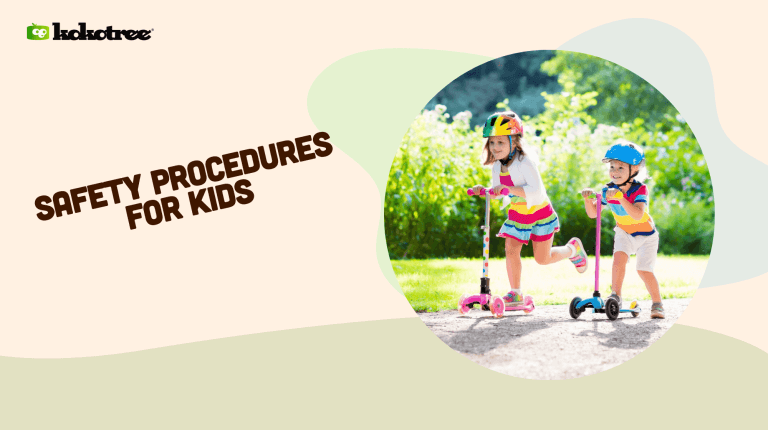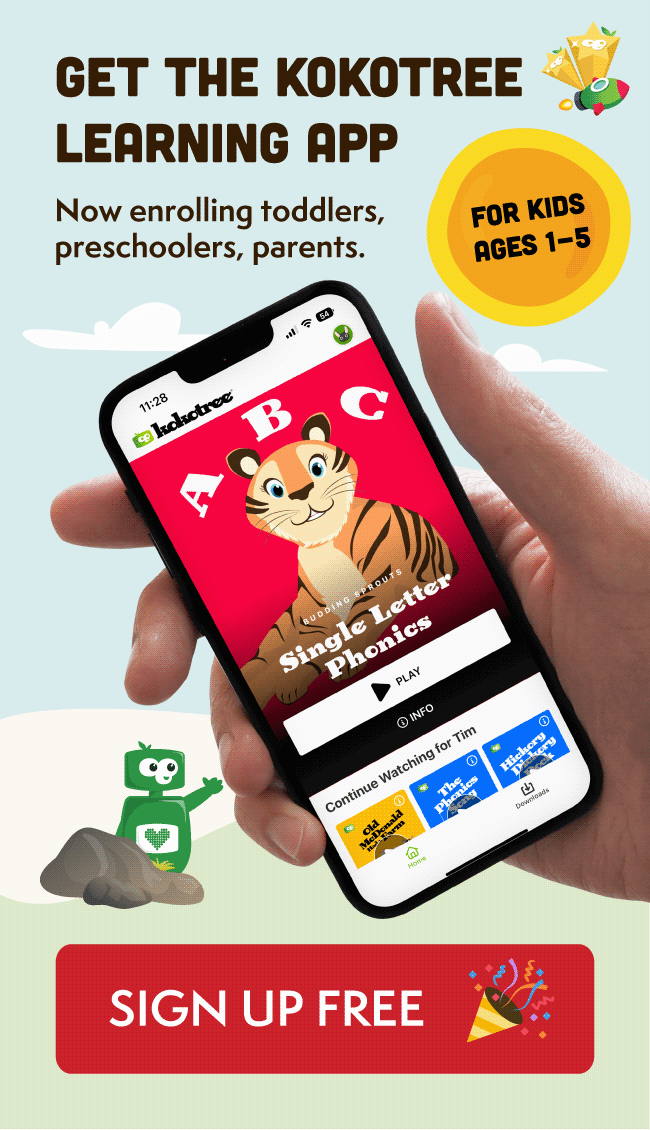

As parents, we naturally want to protect our little ones and ensure they grow up safe and sound. But how can we teach them crucial preschool safety activities? This blog post will explore various activities, games, and storytelling techniques to capture your preschooler’s attention and instill essential safety rules.
Safety activities for preschoolers involve teaching them basic preschool safety rules and precautions through engaging in activities, games, and storytelling. It’s essential to make learning enjoyable, helping children retain vital knowledge and develop safe habits.
Take children on a scavenger hunt around the classroom, pointing out safety tools and features like first aid kits, fire extinguishers, and emergency exits.
Teach children this essential fire safety move. Let them practice stopping, dropping to the ground, covering their face, and rolling if their clothes were to catch fire.
Using colored cards (red, yellow, green), teach children the basics of traffic lights. They run on green, walk on yellow, and stop on red.
Create scenarios where someone approaches the children. Teach them the importance of not talking to or accepting things from strangers.
Let children create and color basic safety signs like “STOP” and “GO,” reinforcing their understanding of these vital signs.
Show children the items in a first aid kit, explaining their uses. This familiarizes them with the tools that can help if someone is hurt.
Discuss the basics of water safety, using props like life jackets. Emphasize the importance of never swimming alone.
Teach children to “Drop, Cover, and Hold On” during an earthquake. Practice finding safe spots in the classroom.
Using toy phones, teach children how to dial emergency numbers and explain when they should do so.
Discuss the importance of helmets and show the correct way to wear them. You can also touch on other bike safety topics like reflectors.
Introduce songs that teach safety rules. Singing reinforces memory, making it a fun way to learn.
Make a game of identifying potential hazards in a room. Children can point out things like sharp objects, spills, or cords.
Provide children with pictures of various activities, and let them sort which are safe and which are not.
Using tape or chalk, create a mock crosswalk in a play area. Teach children the importance of looking both ways and using crosswalks.
Use puppets to enact different safety scenarios, asking children to chime in on what the puppets should do.
Show children common medicine containers and emphasize that they should never touch or consume anything without adult supervision.
Regularly practice fire drills, teaching children the safest and quickest routes out of the building.
Read books focused on safety topics, followed by discussing the story’s lessons.
Show children outlets and cords, discussing the importance of not playing with them to avoid electrical shocks.
Provide various safety gear like helmets, knee pads, and life jackets. Let children try them on and discuss their uses.
Pose hypothetical safety situations and ask children how they would respond, guiding them to the safest choices.
Discuss the dangers of hot stoves, sharp knives, and other kitchen hazards, teaching them to always have adult supervision in the kitchen.
Use hula hoops or tape circles to teach children about personal space, emphasizing the importance of respecting others’ boundaries and their own.
Each safety game for preschoolers is designed to teach safety principles in a fun and interactive way, ensuring children internalize these critical lessons while enjoying the process.
Create bingo cards with safety symbols or scenarios. As you call them out, children mark them. This game reinforces recognition of safety signs and situations.
A classic game where one child plays the “traffic light,” giving commands. It teaches kids to follow directions and understand basic road safety.
Use cards with images of safety equipment or signs. Children flip them over two at a time, trying to find matching pairs, reinforcing safety symbol recognition.
Set up an obstacle course where children pretend to be firefighters, perhaps “rescuing” stuffed animals. This game emphasizes the bravery and importance of firefighters.
Flash safety sign cards and have children shout out their meanings. It’s a quick and fun way to ensure they recognize important signs.
Set up a room with some deliberate “hazards.” Children compete to spot and list as many as they can, emphasizing the importance of being observant.
Show children various pictures and ask if they’re safe or not. This game helps kids differentiate between safe and unsafe scenarios.
Play the traditional “Simon Says” but with safety actions, like “Simon says, stop, drop, and roll.
Designate a start and an “exit” point. Children must figure out the safest path to exit, simulating an emergency escape.
Children act out different safety scenarios or use safety equipment without speaking while others guess.
Using a watermelon or egg, show what happens when it’s dropped without “protection” versus with a helmet (or cushion). A vivid game illustrating the importance of helmets.
One child is the crossing guard, ensuring others safely cross the “street” (a designated area), emphasizing road safety.
Provide objects, and children must race to sort them into “safe” and “unsafe” bins.
A quiz game where children answer questions about emergency numbers and when to call them.
Fill boxes with safety items (like gloves and masks). Children feel inside without looking and guessing the item, emphasizing the tactile recognition of safety tools.
A fun game where children race to “treat” a pretend injury on a doll or teddy bear using band-aids.
Present children with safety scenarios. They must “stop, think,” and then “choose” the correct action from multiple choices.
Divide children into groups and have them enact short skits based on different safety scenarios.
Provide safety-themed puzzles. Children race to complete them, reinforcing safety symbols and scenarios.
Play various sounds (sirens, alarms). Children identify them and state what they should do when they hear them.
Lay out safety gear (helmets, knee pads). Children race to put on the correct items as called out.
Play music and let the children dance. When the music stops, they must rush to a designated “safe spot.”
Using safe items (like water and juice), children decide if it’s a “poison” or a “potion,” emphasizing the importance of not consuming unknown substances.
Storytelling is a powerful way to help children grasp new concepts and ideas. Our following recommendations will provide exciting and informative bedtime stories that can easily be integrated into your toddler’s safety learning journey.
Create your own stories by personalizing them with your child’s name and experiences to make learning safety procedures more relatable. A story featuring them as the protagonist will engage your toddler and make the lessons more impactful. This approach reinforces the importance of safety and helps your child understand the real-life implications of different situations.
Some countless existing stories and books teach children about safety procedures. Choose easy-to-understand, age-appropriate stories focusing on different safety topics, like “Officer Buckle and Gloria” by Peggy Rathmann, which teaches the significance of listening to safety rules. Incorporate daily reading sessions in your routine so your toddler will have continuous exposure to essential safety concepts.
An increasingly popular method of enhancing children’s safety knowledge is through technology. A learning app for toddlers can provide a highly interactive and visually appealing platform for educating children on safety procedures. Here are some suggestions for leveraging a learning app:
With so many learning apps available, it’s crucial to research and select reputable options that focus on safety procedures. Make sure the app offers appropriate content and features engaging, age-appropriate games or lessons.
While the learning app enables independent learning, parental involvement is still essential. Take the time to monitor your child’s progress and guide them through the learning modules when needed. This will also give you an opportunity to reinforce safety lessons in a real-life context.
Remember, early childhood education plays a vital role in shaping a child’s future. By combining engaging activities, games, storytelling, and learning apps, you can create a well-rounded and enjoyable safety education for your toddler. With patience, creativity, and consistency, you’ll empower your child with essential safety skills that will serve them for years to come.
Aside from teaching safety procedures through engaging methods, it’s equally important to ensure that the environment at home promotes security and fosters a healthy learning experience. Here, we will explore additional ways to elevate your toddler’s sense of safety within your home as a part of their comprehensive “toddler education.”
Childproofing your home is an essential step in guaranteeing your toddler’s safety. Make sure to secure heavy furniture, cover electrical outlets, and store toxic substances out of reach. These measures will prevent accidents and set a safe foundation for playing and learning about safety procedures.
A consistent routine will create a predictable and familiar environment for your toddler. This includes regular meal times, playtime, reading time, and bedtime. Establishing a routine can give your child the stability they need to learn better and improve their overall sense of security.
Encourage your child’s participation in family discussions about the importance of safety. Ask them for their opinions or suggestions on how to make their environment safer. Involving them in such conversations builds their sense of responsibility and helps them understand the significance of safety in their daily lives.
Strong relationships between parents, caregivers, and educators can bolster a child’s learning experience and ensure a solid foundation for their ongoing safety education. Here are some ways to establish a collaborative approach:
Establish regular communication channels with your child’s teachers or caregivers to understand their learning needs and progress in safety lessons. This will enable you to support their educational journey with appropriate resources and reinforcement of safety rules and procedures at home.
Participate in workshops or webinars focused on toddler safety. These events can provide valuable insights into the latest research and best practices in promoting safety education. By staying informed, you can apply this knowledge to your toddler’s education and help them continue developing vital safety awareness.
Equipping young children with critical safety knowledge is essential to toddler education. By establishing a safe home environment, collaborating with caregivers and educators, and employing engaging methods like activities, games, storytelling, and learning apps, you can provide a comprehensive safety education experience. Remember, patience and consistency are key in nurturing your child’s development of safety awareness, and they will rely heavily on your guidance and support.
We understand that as a parent, you might have questions related to teaching safety procedures to your toddler. In this FAQ section, we’ve compiled some common questions and concise answers to help you quickly find the information you seek.
While children’s understanding of safety will vary depending on their age, it’s never too early to start teaching them basic safety concepts. As soon as they can comprehend what you’re saying, you can start introducing simple safety lessons that are age-appropriate and tailored to their level of understanding.
Break down complex procedures into bite-sized, easy-to-understand steps, and use visual aids or storytelling techniques to make it more engaging. Your toddler will retain and understand the information better if it’s presented in a familiar, relatable context.
Monitor and assess your child’s progress in a periodical manner. Encourage open communication to understand their thoughts and experiences related to the games. You can also ask their teacher or caregiver for their opinions on how well they’re applying their safety skills during playtime.
Emphasize positive reinforcement, and let your child know that these safety lessons are meant to keep them safe and help them feel secure. Address their fears by explaining that the purpose of learning these safety procedures is to prepare them for different situations and empower them with the knowledge they need to stay safe.
Repetition and consistency are key in helping your child retain the information. Regularly review safety procedures through engaging activities, games, or conversations, and reinforce the importance of following these rules in their daily lives.
Incorporate safety lessons into your child’s everyday activities. For example, you can discuss road safety when taking a walk, teach them about fire safety when cooking, or read them bedtime stories that revolve around safety topics.
While learning apps can be valuable tools for safety education, they should not replace hands-on experiences or parental involvement. Use the app as a supplementary resource, and ensure you actively participate in your child’s safety learning journey, providing guidance and support.




